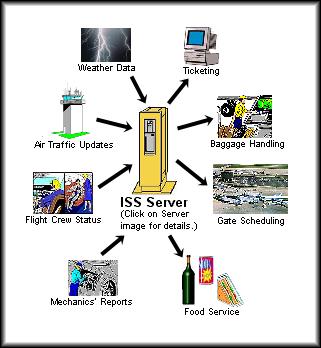
Zero-Latency
In IT terminology, latency is defined as the time required for a system to respond to an input. A
zero-latency strategy is a plan to decrease latency througout the enterprise to the absolute minimum. In the ideal zero-latency enterprise (ZLE) all new information is made instantly available throughout the enterprise and
beyond. This approach is most applicable in areas with rapidly changing business conditions that are best evaluated with up-to-the-minute information. A good example is the airline industry. Major airlines constantly
manage a wide range of activities, including flight and flight crew scheduling, aircraft maintenance, and even food catering services. Unpredictable weather changes or equipment failures often require adjustments to
departmental operations throughout the system. Rapid dissemination of information can improve efficiency, reduce operating costs, and increase customer satisfaction. Unfortunately, this information is often available only
through multple independent business units employing a heterogenous mix of application systems.
ZONARís Information Sharing System (ISS) is ideally suited to enabling a zero-latency strategy, because all information published is immediately available to all ISS subscribers.
- Systems collecting critical data are mapped to the ISS.
- Publication of that data to the ISS input queue is performed in real-time by the ISS Collector or through ISS API calls made by the source application.
- The published items are analyzed by the Semantic Engine, transformed into Information Objects, and queued for subscription processing.
- Departments involved in the decision-making process have previously established subscriptions to all types of information that may affect those decisions. Threshold values may be included to act as alarms for unexpected occurrences. When the subscriptions are created, the ISS stores the information requests as filters in the ISS metadata repository.
- The subscription processor matches the Information Objects it receives with the subscription filters. The comparison is made using the full semantic processing power of the Semantic Engine to determine if any information content in a published Object is relevant to each subscription request.
- All information which satisfies a subscriberís criteria is distributed to the specified destination, where it may be reviewed, or automatically applied to a departmental application or database.
- Within seconds of itís creation, information crucial to important business decisions is in the hands of those who need it.
